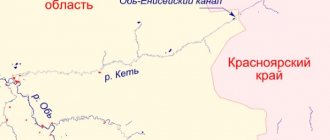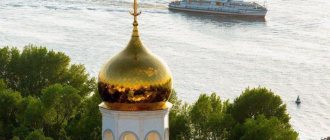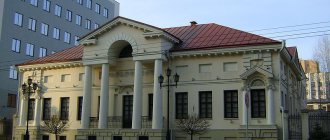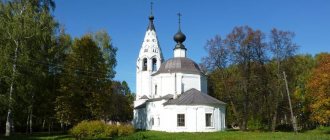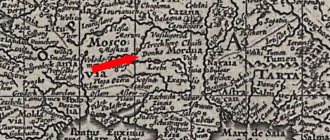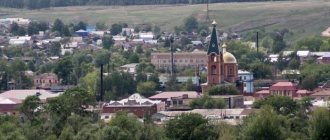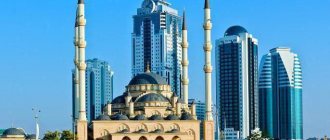Factual information
— Salekhard is the capital of the Yamalo-Nenets Autonomous Okrug, the only city on the Arctic Circle.
— Population — approximately 39,000 people.
— Distance to Moscow — 2436 kilometers.
— Travel by public transport is 13 rubles, by minibus — 17 rubles.
My love for Salekhard is woven from shimmering snowflakes, flashes of the northern lights, the aroma of the tundra, the sweet and sour taste of lingonberries with a slight bitterness, the Ural Mountains covered with clouds, endless expanses, the highest snowdrifts, a lilac-pink carpet of fireweed. As soon as the panorama of the city appears through the window, I feel that I have flown home, although I have been living very, very far from here for ten whole years.
Salekhard can be different: a neat toy city with colorful houses in the central part, motley and unsettled on the outskirts, almost deserted and quiet in the summer, noisy, seething in early autumn. It is best to come here at the very end of August - beginning of September. Autumn in Salekhard is extraordinary - bright, colorful, fragrant. In order to see it in all its glory, you must definitely visit the tundra and the banks of the Ob.
Polar fortress How Obdorsky fort became the city of Salekhard
Salekhard is the only city on Earth located on the Arctic Circle, the administrative center of the Yamalo-Nenets Autonomous Okrug. Until 1933, the settlement was called Obdorsk and belonged to the category of workers' settlements. Nevertheless, Salekhard has a rich past: in 1595, the Cossacks founded a fortress on the site of the future city, which became the northernmost outpost of the Russian state. History and modernity of Salekhard - in the Lenty.ru gallery.
View of the museum building in Obdorsk. Photo of the Ob-Pechersk expedition, 1913
Photo: fund of the Yamalo-Nenets District Museum and Exhibition Complex named after. I.S. Shemanovsky
The district museum in Obdorsk (now Salekhard) was founded in 1906 by the Russian church leader, historian and ethnographer Ivan Shemanovsky (Father Irinarh). It was created to store a collection “on the ethnography of foreigners of the Tobolsk North,” that is, it was a classic local history museum. Now in its place stands the Yamalo-Nenets Museum and Exhibition Complex.
Pretzel Obtresta in the city of Obdorsk, 1920s
Photo: fund of the Yamalo-Nenets District Museum and Exhibition Complex named after. I.S. Shemanovsky
Trusts in the USSR were created during the implementation of the New Economic Policy (NEP) as an association of enterprises in the same industry operating on the principle of self-financing. The Obtrust was engaged primarily in fishing and fur trade, and also included retail trade enterprises.
Central street of Obdorsk, 1909
Photo: fund of the Yamalo-Nenets District Museum and Exhibition Complex named after. I.S. Shemanovsky
Two-story wooden houses dominated the architecture of Obdorsk at the beginning of the twentieth century. Its appearance began to change only towards the end of the 1930s, when a decision was made to give the village the status of a city.
Obdorsk General Store, 1920
Photo: fund of the Yamalo-Nenets District Museum and Exhibition Complex named after. I.S. Shemanovsky
Like many other retail enterprises, the Obdorsky supermarket belonged to Obtrust. The choice of goods was not rich - however, this is not surprising, given the geography of the settlement.
Obdorsk, view of Poluy, 1909
Photo: fund of the Yamalo-Nenets District Museum and Exhibition Complex named after. I.S. Shemanovsky
The Poluy River, a tributary of the Ob, crosses the Yamalo-Nenets District. Its length is 369 kilometers.
Russia, Salekhard. On one of the city streets
Photo: Georgy Shpikalov / TASS
The streets of Salekhard are not noisy and there are few people, and on the embankment you can relax and look at small fishing boats.
Obdorsky fort, modern reconstruction
Photo: Oleg Znamensky / Photobank Lori
Obdorsky fort is the predecessor of modern Salekhard. It was on the site of the Obdorsk fortress, as the Cossacks called the settlement they founded in 1595, that the city was built. Now in Salekhard there is a modern reconstruction of wooden buildings of that era.
Salekhard, museum and exhibition complex named after I.S. Shemanovsky
Photo: Lyudmila Kostineva / Lori Photobank
This is what the Obdorsky District Museum looks like now. In its place, an entire exhibition complex has grown up dedicated to local peoples and the land on which they lived and live.
Fathers and sons on the street of Salekhard
Photo: Vadim Morozov / Lori Photobank
The birth rate in Salekhard is growing steadily. Thus, in 2012, 150 children were born at the Salekhard Perinatal Center, in 2013 - 170, and in 2014 - 193 children.
Republic Street
Photo: Oleg Znamensky / Photobank Lori
There are many cities in Russia that have Republic Street, and Salekhard is no exception. The street received this name in honor of the February Revolution of 1917. When the Bolsheviks came to power, they did not rename the street.
Autumn in the tundra
Vast, boundless space and a low, low sky, as if clinging to the ground. It seems that just a little more - and it will be possible to reach the clouds. The leaden sheen of the river with bluish tints and huge stones making the bank almost impassable. Strict, majestic and silent beauty. Like an embodied metaphor for pride and free loneliness.
But there are other places - a joyful and cheerful polar forest with dwarf birch trees, touching young fir trees, shrubs and berries. In autumn, the forest (more precisely, of course, the forest-tundra) is filled with lush colors. Nature takes revenge for the strict palette of snow days, of which there are on average about 200 per year. Golden yellow, crimson, bright orange, soft green, purple, snow white, sky blue, dark green, rich red shades combine with each other with unreal harmony.
You walk along the springy earth (the area is very swampy), inhale unusually clean, crystal-clear air, pick deep red lingonberries, black-purple blueberries, bluish-lilac blueberries, and sometimes wild rose berries. It is especially tasty after the first frost - soft, sweet and sour, orange-red.
You can also pick mushrooms: tight boletus mushrooms, noble porcini mushrooms, colorful russulas. Or just sit on soft hummocks, warmed by the sun and enjoy the ringing silence.
Useful tips
— Be sure to take insect repellent with you and choose the most closed clothing possible—mosquitoes and midges are rampant in the tundra. Although at the beginning of autumn there are significantly fewer of them than in summer.
— It’s better to choose waterproof shoes—the area is swampy.
— A favorite vacation spot for Salekhard residents is Karchagi, which unites the Ob River with a sandy shore and a picturesque forest. They get there by car, or by taxi.
— The indigenous peoples of the North (Nenets, Khanty) treat the tundra and the land very carefully. Even traditional shoes are made in such a way as not to damage the soil. Remember - we are guests in the tundra and must behave respectfully.
Monuments of Salekhard
Over the past few years, Salekhard has changed a lot, especially the city center. It is built up with brand new multi-colored multi-story buildings with crimson and blue roofs, bright yellow, blue, and green walls and turrets. Rich colors enliven the snow-white winter palette of the city and bring warmth to it.
And many interesting monuments appeared in Salekhard. Some of them claim to be unique. Like, for example, the Torch Bridge over the Shaitanka River. It should be noted that it evokes mixed feelings among local residents - the river is very small, modest, but the bridge is massive, solid - a real architectural object. Despite this incompatibility, it has become one of the calling cards of the city.
The bridge, built in the shape of a giant torch, has no analogues in the world. His project was even awarded a bronze diploma at the international festival “Zodchestvo-2005” and claims its place in the Guinness Book of Records. The highlight of the bridge is the three-story restaurant located above it, installed on inclined pylons. It is this that gives the bridge the resemblance to a lit gas torch. You can get there by two observation elevators. The supporting supports of the bridge are strongly inclined towards the river, making it seem as if the restaurant is hanging over the water.
Nearby, on the river embankment, there is a monument to a reindeer made of aluminum alloy. It is about 6 meters high and weighs an average of 2 tons. For the aborigines of the Far North, deer is food, clothing, transport, housing, work, and the main character of local legends. Therefore, on the pedestal are inscribed lines from a poem by the Nenets poet and writer Leonid Laptsui: “In the fairy tales of ancient Yamal, in the songs of new generations, everywhere people honor deer with a word of gratitude.” During my childhood (mid-90s), you could still see sledges drawn by reindeer on the central streets. And this is not on the occasion of any holiday, but simply a Nenets or Khanty came to Salekhard on business.
Another monument to the northern animal is a ten-meter sculpture of a mammoth. The fact is that in the area of the local Yuribey River in 1998, the skeleton of a four-month-old mammoth Masha was discovered, which is now kept in St. Petersburg in the Zoological Museum. And in Salekhard there remains an exact copy of Masha, made in Japan. By the way, in May 2007, reindeer herder Yuri Khudi discovered an amazingly well-preserved baby mammoth with a trunk, eyes and remnants of fur on the body on a bend in the Yuribey River. It was established that the baby mammoth died more than 10 thousand years ago. This find became a major archaeological sensation.
One of the most famous monuments of the city is the “66th Parallel” stela (another name is “Arctic Circle”). It symbolizes the geographical uniqueness of Salekhard - the only city on Earth located on the Arctic Circle, which divides Salekhard into two parts. The stele consists of two tall pyramids, separated in the center by a semicircle. In the evening, the lights turn on outside and inside, depicting the northern lights. Near the monument, tourists undergo a ritual of crossing the Arctic Circle, after which participants are awarded certificates.
Another monument, the only one of its kind, is dedicated to the romantics of the 70s, who traveled to the North “for the fogs and the smell of the taiga.” It is made in the form of a drilling derrick, at the top of which a gas torch flutters.
The more ancient history of the city is told by the architectural complex “Obdorsk fort” (Obdorsk is the former name of Salekhard), reproducing the appearance of an outpost of the Russian state in the Obdorsk region in the 17th century. It was opened several years ago on a historical site at the confluence of the Poluy and Ob rivers. “Obdorsky fort” is also considered a monument of Russian wooden architecture. The small fortress is a rather cozy and, if I may say so, friendly building. It is reminiscent of old Salekhard with its cute low wooden houses and carved shutters.
Salekhard | photo report
Not only the climate, but also the landscape looks harsh and this can be seen already in the first photographs. Near the reservoir there is a strict sign prohibiting swimming, which makes such an unfriendly impression even more. And before that, I looked at a photo gallery on the same site called “Christmas Island”, it’s full of beautiful beaches with light sand, looking at which you want to be transported there and go into these waters, and also lie in the sand. Here, to be honest, such a desire does not arise; on the contrary, I want to be away from them. Next we see a highway with a not entirely smooth surface, but this often happens in other regions, so it wouldn’t surprise us. What is striking are the rows of poles with wires, which in most cases do not stand vertically, but with an inclination, some with a very decent tilt. Then the eye is pleased with a large monument to a mammoth, which, as I understand, previously lived in these places. Its size is impressive, especially its huge fangs; it’s scary to imagine what would happen if these animals survived to this day. If you go there, you should definitely take a few pictures near the mammoth as a souvenir. By the way, there is a statue of a moose in Mari El, but it is much smaller and there, no matter how you drive past, there are always people with cameras. Several photographs show rivers, some showing dirty water. Yes, this is not crystal clear water from distant islands with palm trees. And finally we get to the city, I just recently watched Yakutsk and have something to compare with. Here the city looks richer, there are many new residential buildings with beautiful architecture, I am sure that it is pleasant to live in such areas. Usually it’s much better in the countryside than in the city itself, but about Salekhard I would say the opposite, here you feel much more comfortable in the city. I even see a beach full of people and very close to residential buildings, from which you can walk to the water in a few minutes; the cost of apartments in this place is probably more expensive. than in the rest of the city. If I go to this city in the future, I will definitely go to the museum to take a close look at the baby mammoth, from whose DNA they plan to deduce the real one. Maybe by that time they will have taken him out and we can take a look at him at the same time. The cost of muksun fish is amazing, as much as 750 rubles for one small fish is still a bit expensive and its taste is hardly better than sturgeon. At the end they show the outskirts of the city again, here everything looks civilized in principle and even the pillars stand straight. Overall it was interesting to see, now I can imagine what kind of city this is.
Surreal tundra
Imagine: tundra, silence, emptiness, endless space to the very horizon... And suddenly you notice rusted pieces of barbed wire and twisted rails leading to nowhere. It feels like you are in some kind of science fiction film. Where do the rails and wreckage of steam locomotives come from in the deserted, swampy tundra?!
All these are the remains of the so-called “dead road”, the unfinished construction of the Salekhard-Igarka railway. The road was built by prisoners in the 1940s and 1950s.
The construction of a railway along the Arctic Circle is now considered one of the most ambitious projects of the Gulag. An abandoned railway stretches like a narrow snake through the endless swamps of the West Siberian Lowland, through low-growing polar forests and tundra for hundreds of kilometers. The desolation of these places contributed to the fact that the “dead road” and everything that was once connected with it remained almost untouched.
The many years of work of the builders in inhumane conditions were in vain - the construction remained unfinished. However, in the strategic documents for the development of transport in Russia, the project of railway communication between the north of the Tyumen region and Igarka has not yet been erased from the old maps.
Many compare the “dead road” with the “zone” from Tarkovsky’s film “Stalker”. She also has a special appeal, mystery and natural waywardness.
Local color
Since ancient times, Yamal was inhabited by the Khanty, Nenets, Selkup, Komi - northern peoples who even today lead a nomadic lifestyle and preserve many traditions of the past. You can learn about their features by visiting the museum and exhibition complex named after I. S. Shemanovsky.
But it is much more interesting to visit an open-air museum - a natural and ethnographic complex. It is located in Gornoknyazevsk, 12 kilometers from Salekhard (15-20 minutes by car).
At the entrance to the museum grounds there is a birch tree, and a little further there is a larch tree. The first tree is sacred to the Komi and Khanty peoples, and the second is revered by the Nenets. Both trees are full of colorful ribbons and handkerchiefs - according to local beliefs, anyone who leaves a ribbon and a small souvenir can ask God for a blessing for their family.
Coming here, it’s as if you find yourself in a camp of real tents - the dwellings of the nomadic peoples of Yamal. You can go inside, look at the internal structure of the tent, sit on reindeer skins, and touch various utensils. You can even try on a yagushka (a woman’s fur coat) or throw a luxurious polar wolf skin over your shoulders, and take a closer look at a wonderful woman’s bag. These bags are simply gorgeous - made from smooth, shiny reindeer fur, decorated with bright Nenets patterns, and trimmed with fluffy white fox.
On the territory of the complex, deer are kept in a small corral. They have long been accustomed to tourists, they allow themselves to be petted and, according to the museum staff, “they have become awks,” i.e. tame deer. Here you can sit on a sledge (sleigh into which reindeer are harnessed), and hold a hunting bow in your hands.
The museum offers an extensive program: thematic excursions, fishing, reindeer sledding and snowmobiling, participation in ritual holidays, local delicacies. And in winter you can see an exhibition of ice sculptures.
Salekhard: attractions, photos.
Salekhard (from the non-Nen. Salya'khard "settlement on the cape", until 1933 - Obdorsk) is a city in Russia, the capital of the Yamalo-Nenets Autonomous Okrug, and it is significantly smaller than other cities in the region (Novy Urengoy and Noyabrsk) both in terms of population, and on industrial potential. And although Salekhard is a very small city, it is very beautiful and comfortable for its residents: the city is surprisingly clean, and houses and public buildings are painted in all the colors of the rainbow to please the eye on the long northern night.
Salekhard City Day is celebrated on the second Sunday of September. The city is located on the Poluyskaya Upland of the West Siberian Plain at the confluence of the Poluy River with the Ob, 2436 km from Moscow. It is the closest city to the mountains of the Polar Urals in the Yamal-Nenets Autonomous Okrug and the only city in the world located directly on the Arctic Circle. Therefore, everyone arriving in the city can stand at the monument symbolizing the Arctic Circle.
In general, the city has a lot (per capita) of a wide variety of monuments and museums. I really like the open-air museum, where civil aviation planes and helicopters with the help of which Yamal was developed are exhibited.
The nearest railway station, Labytnangi, is located 16 km from Salekhard, on the opposite bank of the Ob, and can be reached by ice or ferry. Each person who crosses is greeted by a mammoth.
Just imagine the number of days with snow and persistent frosts! up to 200 per year. However, Salekhard has one of the northernmost beaches in the world, which is not yet officially registered in the Guinness Book of Records, but on hot summer days the townspeople not only sunbathe, but also swim.
The polar day in Salekhard lasts 31 days, from June 7 to July 7, but there is no polar night in the city, when the sun does not rise at all.
Despite the harsh weather conditions, people lived in these places for a long time, at least 4.5 thousand years ago, this is the age that scientists established based on the results of a study of an ancient burial with objects of religious rituals, which was discovered on August 2, 2022.
The city has the beautiful Yamalo-Nenets District Museum and Exhibition Complex named after I. S. Shemanovsky. The history of the museum began with the collection “Repository of collections on the ethnography of foreigners of the Tobolsk North”, created in 1906 on the initiative of the Orthodox missionary Ivan Semenovich Shemanovsky (abbot Irinarch).
The museum and exhibition complex houses a local history museum, an exhibition center and a scientific library, as well as storage facilities for exhibits.
The museum is very good, it is located in a modern, specially built building, the library with ancient copies of very rare books is amazing.
The complex has a branch - the museum-apartment of L.V. Laptsui, a famous Nenets writer, but I was not there.
Another cool monument is a steam locomotive, in memory of the unbuilt 501 railroad.
The Victory Park is impressive with a small museum of military equipment, the Alexander Nevsky Chapel, and the Eternal Flame.
In front of the Yamalo-Nenets Autonomous Okrug Government building there is a beautiful fountain with angels and the four elements, but it’s hard to imagine what it looks like in winter.
I also really liked the Obdorsky fort, a reconstruction of the forts that the Cossacks built when they conquered Siberia.
You should visit Salekhard at least once in your life.
Photo Marina Chebotaeva and Sergey Galko
Order now!
Your ad could be here!
https://nashural.ru Your advertisement will be seen by thousands of people a day
Interesting? Tell your friends!
